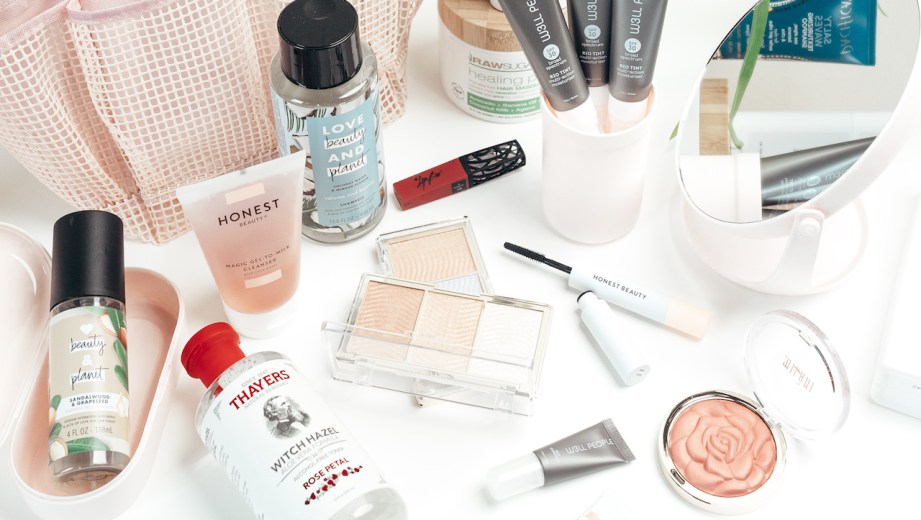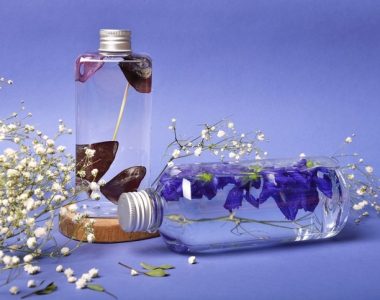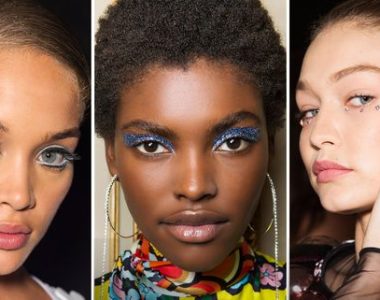
In a world where environmental awareness and health-conscious choices are becoming increasingly prevalent, it comes as no surprise that the beauty industry is undergoing a significant transformation. Consumers are seeking cleaner, more sustainable, and natural beauty products that align with their values and prioritise their well-being. In this in-depth article, we will explore the sweeping trend of clean and natural beauty products, examining the driving factors, key principles, product categories, and the impact this shift has on the industry.
Introduction: The Beauty Industry’s Green Evolution
The traditional beauty industry, once synonymous with chemical-laden cosmetics and harsh skincare, has experienced a paradigm shift. Clean and natural beauty products have risen to prominence as consumers become more discerning and conscientious about the ingredients they apply to their skin and hair. This shift is characterised by a growing demand for products that are free of harmful chemicals, environmentally sustainable, and, whenever possible, derived from natural sources.
The Driving Forces Behind Clean and Natural Beauty
The surge in clean and natural beauty products is driven by several compelling factors:
1. Consumer Health Awareness
Consumers are increasingly concerned about the potential health risks associated with certain synthetic ingredients in cosmetics. They are looking for safer alternatives that don’t compromise their well-being.
2. Environmental Consciousness
The beauty industry is under scrutiny for its environmental impact. From excessive packaging to harmful production practices, consumers are pushing for eco-friendliness.
3. Transparency and Ingredient Knowledge
The digital age has empowered consumers to research and scrutinise product ingredients. With easy access to information, they demand transparency and clarity in product labelling.
4. Clean Beauty Icons
Celebrities and influencers championing clean beauty have brought this movement to the forefront. Their endorsement carries significant weight with their audiences.
5. Regulatory Changes
As regulatory bodies scrutinise ingredient safety, companies are proactively reformulating their products to comply with emerging standards.
Understanding Clean and Natural Beauty
Before we delve into the specifics, it’s essential to define the two key terms in our discussion: clean and natural beauty.
Clean Beauty
Clean beauty is a term used to describe products formulated without harmful or questionable ingredients. These ingredients can include parabens, sulfates, synthetic fragrances, and artificial dyes. The goal of clean beauty is to provide effective products while minimising the risk of adverse effects on both the user and the environment.
Natural Beauty
Natural beauty products emphasise the use of naturally derived, organic, or plant-based ingredients. These products are formulated without synthetic additives, artificial colours, or fragrances. The focus is on harnessing the power of nature to enhance one’s beauty regimen.
Clean Beauty in Detail
Clean beauty has emerged as a powerful movement within the beauty industry. Let’s explore the various facets of clean beauty:
Ingredient Transparency
One of the fundamental principles of clean beauty is transparency. Brands committed to clean beauty strive to provide consumers with complete ingredient lists. These lists are often devoid of harmful chemicals and explained in plain language. This transparency empowers consumers to make informed choices about the products they use.
Ingredient Exclusions
Clean beauty brands meticulously curate their products, excluding a range of controversial ingredients. Some common exclusions include:
- Parabens: These preservatives have raised concerns about potential links to hormone disruption.
- Sulfates: Sulfates are known for their lathering properties but can be harsh on the skin and hair.
- Synthetic Fragrances: Artificial fragrances can contain allergens and irritants.
- Phthalates: These chemicals are often used to improve product texture but may have adverse health effects.
Safer Formulations
Clean beauty products are formulated to minimise harm to the user’s health. This often means milder formulas with fewer potential irritants. For instance, cleansers and moisturizers designed for sensitive skin are common in clean beauty lines.
Sustainability and Eco-Friendly Practices
Clean beauty extends beyond product formulation. Brands are increasingly conscious of their environmental footprint. Sustainable packaging, responsible sourcing of ingredients, and reduced water usage in production are becoming industry standards.
Cruelty-Free Commitment
Animal testing is a contentious issue in the beauty industry. Clean beauty brands frequently commit to cruelty-free practices, opting for alternative testing methods. They also often carry certifications like Leaping Bunny to reassure consumers.
Natural Beauty in Detail
Natural beauty products focus on harnessing the power of nature for beauty and wellness. Here are the key components of natural beauty:
Plant-Derived Ingredients
Natural beauty products often prioritise plant-derived ingredients like aloe vera, chamomile, lavender, and essential oils. These ingredients are valued for their natural fragrances and potential skincare benefits.
Organic Certification
Many natural beauty products carry organic certifications, indicating that ingredients are sourced without pesticides or chemicals. These products also promote sustainable farming practices.
Holistic Approach
Natural beauty often embraces a holistic approach to beauty. This involves not only what is applied to the skin but also what is ingested and overall lifestyle choices that affect beauty.
DIY and At-Home Remedies
The natural beauty movement encourages consumers to take beauty into their own hands. DIY beauty treatments and at-home remedies using natural ingredients are highly popular.
Herbal and Ayurvedic Influences
Many natural beauty products draw inspiration from herbal and Ayurvedic traditions. Ingredients like turmeric, neem, and amla are celebrated for their skin and hair benefits.
Clean and Natural Beauty Product Categories
Clean and natural beauty products span a wide range of categories, offering alternatives to traditional cosmetic and skincare options. These categories include:
1. Skincare
Skincare is a fundamental aspect of clean and natural beauty. It encompasses products such as cleansers, moisturizers, serums, and sunscreen. Key ingredients include hyaluronic acid, botanical extracts, and natural oils.
2. Makeup
Clean and natural makeup products aim to offer vibrant, long-lasting colours without harmful additives. Foundations, lipsticks, eyeshadows, and mascaras are all part of this category.
3. Haircare
Clean haircare focuses on shampoos, conditioners, and styling products that are free of sulfates, parabens, and synthetic fragrances. Ingredients like argan oil, aloe vera, and coconut oil are prevalent.
4. Fragrances
Natural fragrances avoid synthetic additives and often utilise essential oils to create unique scents. These fragrances are ideal for those with sensitivities to artificial fragrances.
5. Bath and Body
Products in this category include body washes, lotions, and bath salts. Ingredients like shea butter, cocoa butter, and organic oils are common.
6. Oral Care
Even oral care is seeing a shift toward clean and natural products. Toothpaste, mouthwash, and dental floss without artificial sweeteners or colourants are gaining traction.
7. Men’s Grooming
Clean and natural beauty is not limited to one gender. Men’s grooming products, including natural shampoos, beard oils, and skincare, are becoming more widely available.
The Impact on the Beauty Industry
The clean and natural beauty movement has substantial implications for the beauty industry as a whole.
1. Market Growth
The market for clean and natural beauty products is on a significant upswing. This growth is not limited to small, niche brands. Large, established companies are also introducing clean and natural product lines in response to consumer demand.
2. Increased Competition
As more brands enter the clean and natural beauty space, competition has intensified. Brands are challenged to differentiate themselves through ingredient quality, efficacy, and sustainability practices.
3. Regulatory Scrutiny
Regulatory agencies are paying more attention to the beauty industry’s ingredients and practices. As a result, companies are adapting to comply with stricter standards, further promoting clean and natural products.
4. Innovation in Ingredients
The clean and natural beauty movement is driving innovation in ingredient sourcing and formulation. Brands are exploring exotic, sustainable ingredients to enhance the efficacy of their products.
5. Consumer Education
The movement places a strong emphasis on ingredient transparency and consumer education. As consumers become more knowledgeable about beauty product ingredients, they are better equipped to make informed choices.
6. Eco-Conscious Packaging
Sustainable packaging is an integral part of clean and natural beauty. The industry is pushing for reduced plastic waste, recyclable packaging, and eco-friendly materials.
Challenges and Controversies
Despite the benefits and momentum of the clean and natural beauty movement, it is not without its challenges:
Ingredient Sourcing
Sourcing high-quality natural ingredients can be challenging, especially for smaller brands. Ensuring sustainability and ethical practices is essential.
Formulation and Efficacy
Creating products without certain synthetic ingredients can be tricky. Some formulations may not perform as effectively without these additives.
Labeling Confusion
The beauty industry is not strictly regulated in terms of what can be labelled as “clean” or “natural.” This ambiguity can lead to consumer confusion.
Cost
Clean and natural beauty products can be more expensive due to the higher cost of natural ingredients and sustainable practices. This cost can be a barrier for some consumers.
Product Shelf Life
Natural products often have shorter shelf lives due to the absence of synthetic preservatives. This means they may need to be used more quickly.
Conclusion: The Green Revolution in Beauty
The clean and natural beauty movement is a reflection of changing consumer values and a heightened awareness of health and environmental issues. It’s a shift away from simply looking good to feeling good about what you use and its impact on the world.
The beauty industry is now more transparent, more environmentally responsible, and more aligned with consumers’ desires for healthier, safer products. As the movement continues to gain momentum, it’s clear that clean and natural beauty is not just a trend; it’s a new standard that’s here to stay.
With an ever-growing market, increasing product diversity, and ongoing innovation, the clean and natural beauty movement is more than just a fleeting beauty fad—it’s a beauty revolution. The green transformation of the beauty industry is a testament to the power of consumer demand for healthier, safer, and more sustainable products.



